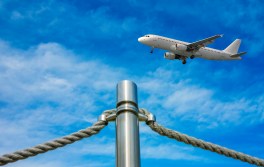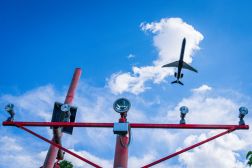The Secret Service is testing facial recognition technology at the White House

The U.S. Secret Service is experimenting with the use of a new kind of surveillance at one of the most highly surveilled locations in the country — the White House.
The agency has become the latest arm of the Department of Homeland Security to begin testing the powers of facial recognition technology with the initiation of its own pilot program last month. Over the course of nine months, the Secret Service will use White House video surveillance to “biometrically confirm” the identity of volunteer Secret Service employees when and where they are spotted. Secret Service agents currently use photos to identify “known subjects of interest” who approach the White House gates — the pilot’s goal is to determine whether facial recognition tech can help the USSS automate this process.
Per a DHS Privacy Impact Assessment schedule, the pilot began on Nov. 19 and will run until Aug. 30, 2019.
It will work like this: Faces seen in video surveillance from two Secret Service CCTV cameras — one in an “open setting” outside the complex gates and another where there is only a “controlled flow of individuals” — will be matched against a database of photos of select Secret Service employees. All these employees have volunteered to take part in the pilot. If the system determines a match, the data will be “retained for research and development” until the end of the pilot. Otherwise, the data will be immediately deleted. Match alerts will be reviewed by the Secret Service on a weekly basis.
While the pilot is only actively searching for volunteer faces, members of the public in the streets and parks near the White House may inadvertently find themselves subjected to the system. The technology the Secret Service is using can capture facial images at up to around 20 yards away. “Individuals passing the cameras involved in the pilot will not be able to opt out of having their faces run against the facial recognition algorithm,” the PIA reads. “However, individuals who do not wish to be captured by White House Complex CCTV and cameras involved in this pilot may choose to avoid the area.”
As to how the public will know about the pilot and their potential participation, DHS says the PIA itself provides “general notice.” However, it’s worth noting that the PIA was published on Nov. 26, a full week after the anticipated start date of the pilot.
Despite this, the pilot is fairly controlled in scope. However, the American Civil Liberties Union is nonetheless concerned about the sidewalk surveillance part. “While this pilot program seems to be a relatively narrowly defined test that does not in itself pose a significant threat to privacy, it crosses an important line by opening the door to the mass, suspicionless scrutiny of Americans on public sidewalks,” the organization wrote in a blog post Tuesday. “That makes it worth pausing to ask how the agency’s use of face recognition is likely to expand — and the constitutional concerns that it raises.”






